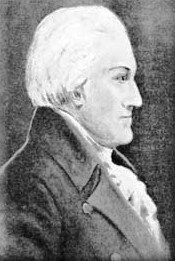A Visit from St. Nicholas
A Visit from St. Nicholas, more commonly known as The Night Before Christmas or 'Twas the Night Before Christmas, is a poem first published anonymously in 1823 and later attributed to Clement Clarke Moore, though some debate its authorship, suggesting Henry Livingston Jr. as the true author. This poem is a cornerstone of Christmas traditions in the United States and has had a profound impact on the conception of Santa Claus in the collective imagination.
Background[edit | edit source]
The poem was first published on December 23, 1823, in the Troy Sentinel, a newspaper in Troy, New York. It was submitted anonymously and was titled "A Visit From St. Nicholas". Its immediate popularity led to numerous reprints, adaptations, and translations, solidifying the characteristics of Santa Claus and his nocturnal visit to children's homes on Christmas Eve.
Content[edit | edit source]
The poem begins with the famous lines:
Twas the night before Christmas, when all through the house Not a creature was stirring, not even a mouse;'
It goes on to describe a visit from St. Nicholas, known as Santa Claus, who arrives with a miniature sleigh and eight tiny reindeer. The poem details St. Nicholas's appearance, his method of entering homes through the chimney, and the joy he brings to children through gifts. The poem concludes with St. Nicholas wishing everyone a good night as he departs.
Impact[edit | edit source]
"A Visit from St. Nicholas" has significantly influenced the Christmas lore in the United States and around the world. It played a key role in shaping the modern image of Santa Claus—with his red suit, nocturnal visit, and mode of transportation. The names of the reindeer mentioned in the poem have become part of popular culture.
The poem also contributed to the tradition of gift-giving during the Christmas season, emphasizing the joy and wonder of the holiday for children and families. Its widespread popularity has made it a staple of Christmas readings and performances.
Authorship Controversy[edit | edit source]
The poem was initially published anonymously, and it was not until 1837 that Clement Clarke Moore claimed authorship. Moore, a professor and poet, included it in an anthology of his work. However, the family of Henry Livingston Jr., a Revolutionary War officer and farmer, has contested Moore's authorship, claiming that Livingston penned the poem years before Moore's claim.
Scholars and historians have examined various aspects of the poem's style, language, and historical context in attempts to resolve the authorship question, but it remains a topic of debate.
Legacy[edit | edit source]
"A Visit from St. Nicholas" has left a lasting legacy on Christmas traditions and the popular image of Santa Claus. It has been adapted into various media, including animations, music, and theater. The poem is a beloved part of holiday celebrations, read aloud in many families on Christmas Eve.
The poem's opening lines are among the most recognizable in English literature, and its influence on the lore surrounding Christmas and Santa Claus cannot be overstated. It remains a cherished piece of holiday literature, embodying the spirit and magic of Christmas.
This article is a literature-related stub. You can help WikiMD by expanding it!
Search WikiMD
Ad.Tired of being Overweight? Try W8MD's physician weight loss program.
Semaglutide (Ozempic / Wegovy and Tirzepatide (Mounjaro / Zepbound) available.
Advertise on WikiMD
|
WikiMD's Wellness Encyclopedia |
| Let Food Be Thy Medicine Medicine Thy Food - Hippocrates |
Translate this page: - East Asian
中文,
日本,
한국어,
South Asian
हिन्दी,
தமிழ்,
తెలుగు,
Urdu,
ಕನ್ನಡ,
Southeast Asian
Indonesian,
Vietnamese,
Thai,
မြန်မာဘာသာ,
বাংলা
European
español,
Deutsch,
français,
Greek,
português do Brasil,
polski,
română,
русский,
Nederlands,
norsk,
svenska,
suomi,
Italian
Middle Eastern & African
عربى,
Turkish,
Persian,
Hebrew,
Afrikaans,
isiZulu,
Kiswahili,
Other
Bulgarian,
Hungarian,
Czech,
Swedish,
മലയാളം,
मराठी,
ਪੰਜਾਬੀ,
ગુજરાતી,
Portuguese,
Ukrainian
Medical Disclaimer: WikiMD is not a substitute for professional medical advice. The information on WikiMD is provided as an information resource only, may be incorrect, outdated or misleading, and is not to be used or relied on for any diagnostic or treatment purposes. Please consult your health care provider before making any healthcare decisions or for guidance about a specific medical condition. WikiMD expressly disclaims responsibility, and shall have no liability, for any damages, loss, injury, or liability whatsoever suffered as a result of your reliance on the information contained in this site. By visiting this site you agree to the foregoing terms and conditions, which may from time to time be changed or supplemented by WikiMD. If you do not agree to the foregoing terms and conditions, you should not enter or use this site. See full disclaimer.
Credits:Most images are courtesy of Wikimedia commons, and templates, categories Wikipedia, licensed under CC BY SA or similar.
Contributors: Prab R. Tumpati, MD




